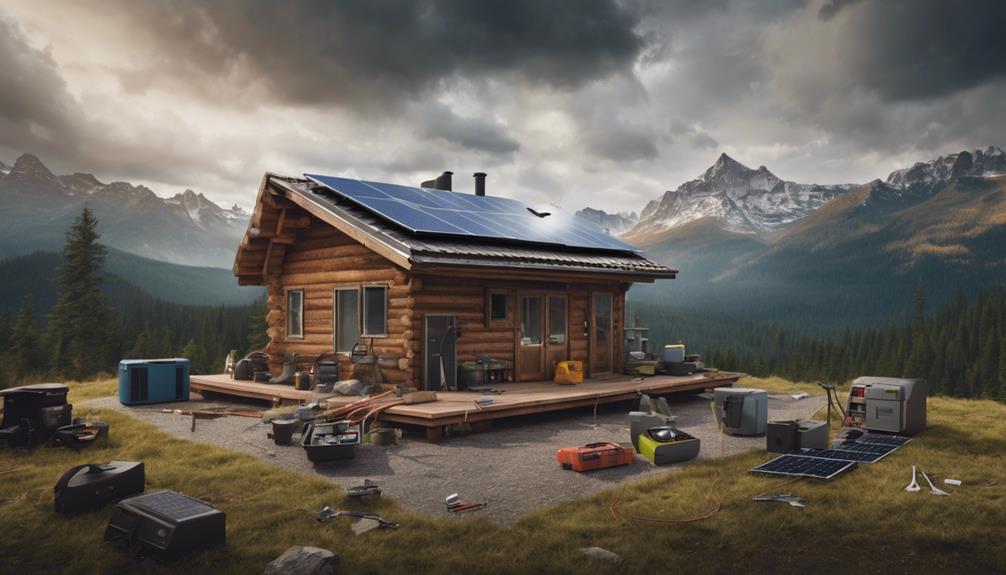
In recent years, the shift towards renewable energy sources has gained momentum, with DIY solar cells emerging as a popular choice for eco-conscious homeowners and enthusiasts. This comprehensive guide will explore the ins and outs of DIY solar cells, providing valuable insights, tips, and resources to help you embark on your solar energy journey.
Understanding the Basics of Solar Energy
Before diving into the specifics of DIY solar cells, it’s essential to grasp the fundamentals of solar energy. Solar energy is harnessed from the sun’s rays and converted into electricity through photovoltaic (PV) cells. These cells absorb sunlight and generate direct current (DC) electricity, which can then be used to power appliances, charge batteries, or even feed energy back into the grid. Understanding how solar energy works is the first step toward creating your own solar power system.
The Benefits of DIY Solar Cells
Choosing to build your own solar cells comes with numerous advantages. First and foremost, DIY solar projects can significantly reduce your energy bills by providing a renewable source of power. Additionally, assembling your solar panels can be a rewarding educational experience, allowing you to gain hands-on knowledge about renewable energy technologies. Furthermore, using solar energy reduces your carbon footprint, contributing to a cleaner and more sustainable planet. By opting for DIY solar cells, you not only save money but also participate in the global movement towards sustainability.
Essential Materials for DIY Solar Cells
When embarking on your DIY solar cell project, having the right materials is crucial for success. Some of the essential components include:
1. Solar Cells: The core component of your solar panel, typically made from silicon.
2. Plywood or Metal Frame: For mounting and protecting the solar cells.
3. Glass or Acrylic Sheet: To cover and shield the cells from environmental elements.
4. Wiring and Connectors: For connecting the cells and facilitating electricity flow.
5. Charge Controller: To regulate the voltage and current coming from the solar panels.
6. Batteries: For storing the energy generated, allowing for use even when the sun isn’t shining.
Gathering these materials ahead of time will help streamline your project and ensure you have everything you need at your fingertips.
Step-by-Step Guide to Building Your DIY Solar Cells
Now that you have a solid understanding of the basics and necessary materials, let’s delve into the step-by-step process of creating your DIY solar cells:
1. Design Your Solar Panel: Measure and plan your solar panel layout, determining how many solar cells you’ll use and their arrangement.
2. Prepare the Base: Cut your plywood or metal frame to size, ensuring it’s sturdy enough to support the solar cells.
3. Attach Solar Cells: Carefully solder the solar cells together, following the manufacturer’s instructions. Ensure that the positive and negative terminals are correctly connected.
4. Secure the Cells: Attach the solar cells to the base using strong adhesive or screws, ensuring they are well-protected against weather conditions.
5. Cover with Glass/Acrylic: Place the glass or acrylic sheet over the cells to shield them from the elements while allowing sunlight to pass through.
6. Wiring Setup: Connect the solar panel to your charge controller and batteries, following proper electrical safety protocols.
7. Testing: Before final installation, test your solar panel to ensure it’s generating electricity as expected.
8. Installation: Once everything is confirmed to be working correctly, mount your solar panel in a location that receives ample sunlight throughout the day.
Common Mistakes to Avoid When Making DIY Solar Cells
As with any DIY project, there are common pitfalls to avoid when creating your solar cells. One of the most frequent mistakes is improper soldering of the cells, which can lead to reduced efficiency or total failure of the panel. Additionally, neglecting to account for shading from nearby trees or buildings can significantly diminish solar output. Be sure to choose a location that maximizes sun exposure. Lastly, overlooking the importance of a charge controller could damage your batteries, so always include this component in your design to ensure optimal performance and longevity.
Maintenance Tips for DIY Solar Cells
After successfully building your DIY solar cells, maintaining them is key to ensuring long-term efficiency and effectiveness. Regularly check for dirt and debris on the surface of the solar panels, as even a thin layer of grime can hinder performance. Clean the panels using water and a soft cloth to prevent scratching. Additionally, inspect the wiring for any signs of wear and tear, and ensure that the connections remain secure. Monitoring the battery levels and charge controller settings will also help maintain the health of your solar power system.
Exploring the Future of DIY Solar Technologies
The future of DIY solar cell technology looks promising, with advancements constantly being made to improve efficiency and affordability. Emerging technologies, such as organic solar cells and perovskite solar cells, offer exciting opportunities for DIY enthusiasts to create even more efficient systems. Moreover, the growing availability of online resources, communities, and forums dedicated to solar energy will continue to support individuals looking to explore DIY solar projects. Staying informed about these innovations will help you enhance your solar energy system and possibly inspire future projects.
Conclusion: Embrace the Power of DIY Solar Cells
In conclusion, embarking on a DIY solar cell project is an empowering and sustainable choice that can lead to significant energy savings and a reduced environmental impact. By following the steps outlined in this guide, avoiding common mistakes, and maintaining your solar cells diligently, you can harness the power of the sun in your own home. Whether you’re a seasoned DIYer or a newcomer to renewable energy, the journey towards creating your solar power system is both rewarding and impactful. Embrace the future of energy by taking the first step towards DIY solar cells today!





